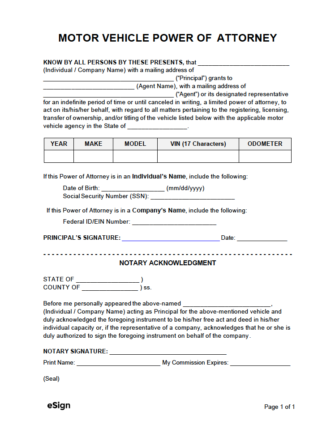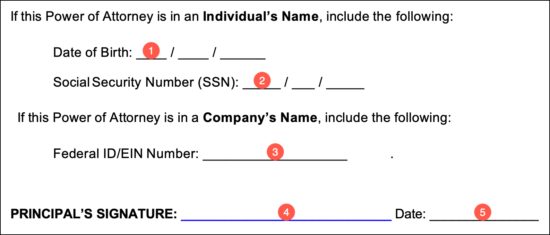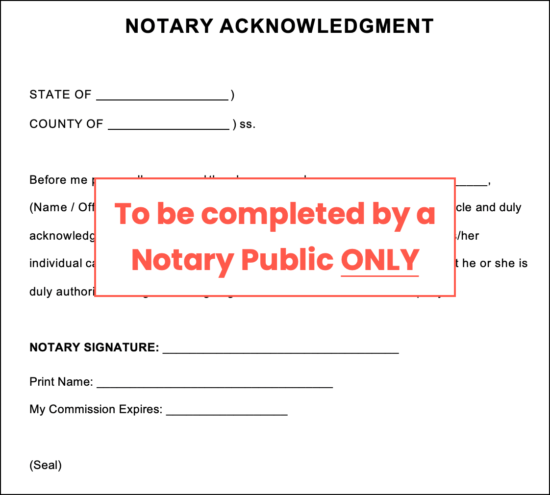A vehicle power of attorney form is a document used for designating a representative to handle vehicle ownership and registration tasks on behalf of the principal. The form is often provided by the principal’s local Department of Motor Vehicles and, depending on the state, may need to be signed in the presence of a notary public or separate witnesses.
Commonly used for authorizing the following:
- Purchase or sale of a motor vehicle.
- Registration of a car or truck.
- Application for a duplicate title certificate.
- Recording of a lien.
By State
- Alabama
- Alaska
- Arizona
- Arkansas
- California
- Colorado
- Connecticut
- Delaware
- Florida
- Georgia
- Hawaii
- Idaho
- Illinois
- Indiana
- Iowa
- Kansas
- Kentucky
- Louisiana
- Maine
- Maryland
- Massachusetts
- Michigan
- Minnesota
- Mississippi
- Missouri
- Montana
- Nebraska
- Nevada
- New Hampshire
- New Jersey
- New Mexico
- New York
- North Carolina
- North Dakota
- Ohio
- Oklahoma
- Oregon
- Pennsylvania
- Rhode Island
- South Carolina
- South Dakota
- Tennessee
- Texas
- Utah
- Vermont
- Virginia
- Washington
- West Virginia
- Wisconsin
- Wyoming
Contents |
What is Motor Vehicle Power of Attorney?
When an agent is appointed using a motor vehicle power of attorney, they obtain the right to perform certain actions regarding another individual’s vehicle. This can include the right to register, sell, transfer, obtain a new title, and other actions. State DMVs will almost always require an agent to have one in order to act on another’s behalf. This is to limit fraud and prevent vehicles from being stolen. Because there is no Federal motor vehicle power of attorney, the principal should choose a state-specific POA to ensure it is accepted as valid when presented by the agent.
How to Use
Anyone that owns (or is looking to purchase) a motor vehicle can make use of a motor vehicle power of attorney to permit another to complete the tasks on their behalf. The principal will need to collect and organize all of the required paperwork/identification, select an agent and ensure they are willing to perform the actions as requested, complete the form, and sign it in accordance with the state-specific requirements.
Step 1 – Collect Information
Depending on the reason for using the POA, the agent may need to obtain the vehicle’s registration, proof of insurance, license plate, certificate of title, and other documentation. The principal must provide some sort of identifying number verifying who they are, which can come in the form of their driver’s license or state-issued ID number.
Step 2 – Select Agent and Powers
The agent can be anyone the principal chooses as long as they are over the age of eighteen (18); a friend, family member, or other trusted individual. Because the agent could have the power to sell the principal’s vehicle, the agent that is selected should be someone the principal deems as trustworthy.
Depending on the form, the principal will need to either check the applicable box(es) for each power they wish to assign or write them down one by one. If written, the principal should be very specific in the language they use. This is important for preventing the agent from receiving too much power, and for ensuring the DMV accepts it as a valid document.
Step 3 – Sign
The POA will always have to be signed by the principal. The form should also be notarized, regardless of whether or not the state requires it. The agent does not need to sign the form. Notarization can be completed online by using eSign, or in-person at banks, law/real estate firms, shipping stores (such as UPS), libraries, colleges, and more.
Step 4 – Agent Completes Task(s)
The agent will need to present the completed POA to the DMV or local town office in order to complete their assigned tasks. The agent should write the word “POA” next to any signatures they write on behalf of the principal. Any and all records and receipts acquired while acting as a representative should be kept for the principal’s records.
Sample
Download: PDF (Blank) | PDF (Sample Data)
MOTOR VEHICLE POWER OF ATTORNEY
KNOW BY ALL PERSONS BY THESE PRESENTS that [PRINCIPAL NAME] with a mailing address of [PRINCIPAL ADDRESS] (the “Principal”) grants to [AGENT NAME], with a mailing address of [AGENT ADDRESS] (the “Agent”) or its designated representative for an indefinite period of time or until canceled in writing, a limited power of attorney, to act on its/his/her behalf, with regard to all matters pertaining to the registering, licensing, transfer of ownership, and/or titling of the vehicle listed below with the applicable motor vehicle agency in the State of [STATE].
| YEAR | MAKE | MODEL | VIN | ODOMETER |
| [YEAR] | [MAKE] | [MODEL] | [#] | [#] |
If this Power of Attorney is in an Individual’s Name, include the following:
Date of Birth: [MM/DD/YYYY]
Social Security Number (SSN): [#]
If this Power of Attorney is in a Company’s Name, include the following:
Federal ID/EIN Number: [#]
Principal’s Signature: ______________________ Date: [MM/DD/YYYY]
NOTARY ACKNOWLEDGMENT
STATE OF [STATE]
COUNTY OF [COUNTY]
Before me personally appeared [PRINCIPAL NAME], acting as Principal for the above-mentioned vehicle and duly acknowledged the foregoing instrument to be his/her free act and deed in his/her individual capacity or, if the representative of a company, acknowledges that he or she is duly authorized to sign the foregoing instrument on behalf of the company.
Notary Signature: ______________________
Print Name: [NOTARY NAME]
My Commission Expires: [MM/DD/YYYY]
(Seal)
How to Write
Download: PDF, Word (.docx), OpenDocument
Step 1 – The Parties
Enter the following information into the appropriate fields:
- Name of the principal (can be a company or person);
- The principal’s mailing address;
- The name of the agent;
- Their mailing address; and
- The name of the state in which the POA will be used.
Step 2 – The Vehicle
The following information must be entered pertaining to the motor vehicle:
- Year (e.g., “1994”)
- Make (e.g., “Chevrolet”)
- Model (e.g., “1500”)
- VIN (17 characters)
- Odometer (e.g., “150,000”)
Step 3 – Principal Identification + Signature
If the principal is a person, enter their date of birth (DOB) followed by their social security number (SSN). If the principal is a company/entity, enter the company’s Federal ID OR EIN Number. The principal will then need to sign their name and enter the date. This can be accomplished by printing out the form and signing it by hand, or by using eSign.
Step 4 – Notarization
The principal will need to bring the completed document to Notary Public in person OR save the file to their computer and complete the notarization process using eSign.









